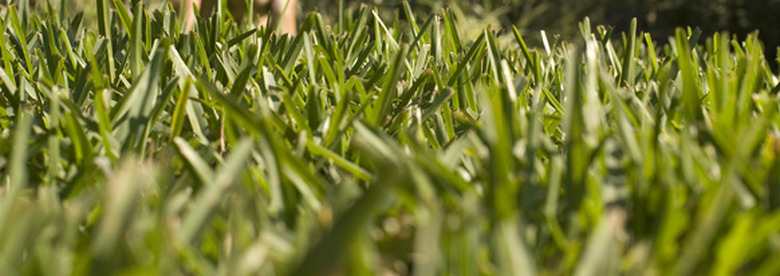How Do I Take Care Of St. Augustine Grass In The Winter?
Things Needed
- Water
- Lawnmower
- Fertilizer
- Compost
St. Augustine grass is a very popular Southern lawn grass due to its toughness and lush green growth. It thrives in hot weather and can even withstand saltwater in coastal areas. Conversely, it doesn't survive well in cold temperatures and dry areas. True winter with frost and snow will damage St. Augustine grass, one reason it is found mostly in Southern climates. However, you can help St. Augustine grass survive mild winters with proper preparation and year-round care.
Step 1
Make sure your grass is healthy throughout the summer going into the fall, free of pests and diseases. You should water and mow regularly, and fertilize the lawn once a month through late fall with a nitrogen-heavy fertilizer. The fertilizer should also contain potassium: a ratio of about half as much potassium as nitrogen will help the grass better tolerate cold and drought during the winter.
- St. Augustine grass is a very popular Southern lawn grass due to its toughness and lush green growth.
- True winter with frost and snow will damage St. Augustine grass, one reason it is found mostly in Southern climates.
Step 2
Fertilize one final time in late fall with a layer of rich compost sprinkled across the lawn. This will help the grass keep its green color through the winter and give it a good base from which to start growing in the spring. It will also help keep weeds at a minimum.
Step 3
Reduce mowing in the fall. St. Augustine grass doesn't grow much in the fall and winter, so you should only mow once every two months or so once the temperatures cool off.
Step 4
Raise the height of your mower blades in the fall. Cutting the grass longer will help it build up enough energy reserves to make it through the winter. Cut St. Augustine grass about an inch higher than you would during the summer.
- Fertilize one final time in late fall with a layer of rich compost sprinkled across the lawn.
- Cut St. Augustine grass about an inch higher than you would during the summer.
Step 5
Ease off on watering. Winter can be a rainy season in some Southern areas, so natural rainfall coupled with cooler temperatures may mean you don't need to water at all in the winter. Water only when the lawn begins to wilt or turn gray or brown. It's also acceptable to let the lawn go dormant on its own in the winter if you don't mind having a wilted lawn.
